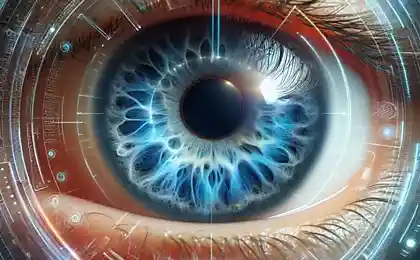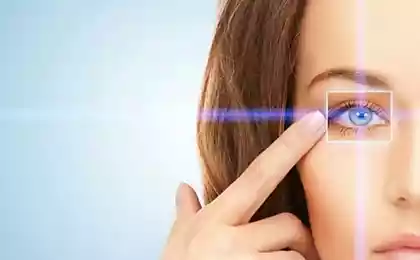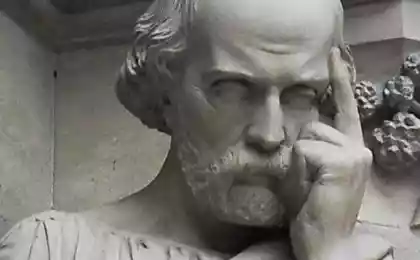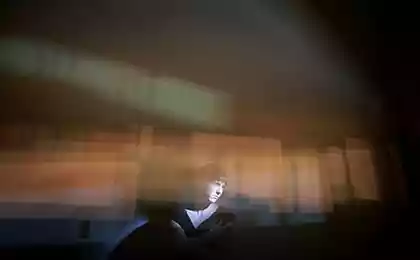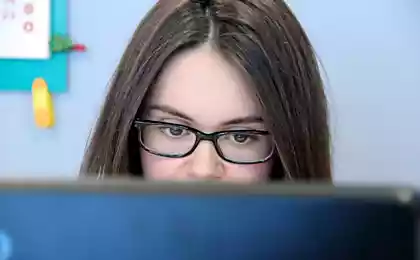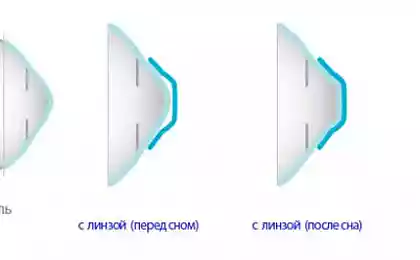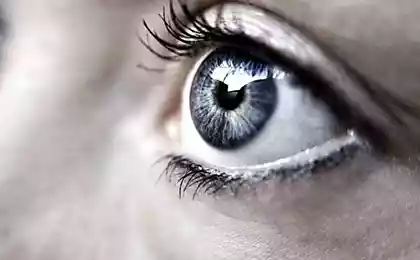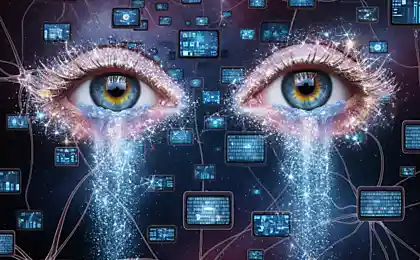259
Very fast and effective way to restore vision
There are 2 theories why a person’s vision deteriorates. In my opinion and in my experience, both of them are
The lens of the eye and ciliary muscles First, let’s take a look at why vision is deteriorating:
Shortsightedness is corrected with a biconcave (reduced) lens.
Farsightedness - corrected with increasing lenses
Briefly about the causes: loss of elasticity of the lens, spasm or “insufficiency” of the ciliary muscle – a muscle that changes the curvature of the lens.
Supporting muscles of the eye: lateral, medal and others In the photo of the right eye
We will not describe in detail how and what muscles of the eye work – it is easy to understand looking at the picture. I want to say only one thing: due to the uneven load on the muscles, some of them spasm, and either change the shape of the eyeball (and then even with the normal operation of the lens and ciliary muscles, the same picture is obtained as in the images above),
Or simply “lead the eye to the side” – when you look at the monitor screen, both eyes look at one closely located point, and therefore only the muscle (medial) that turns / mows the eye, so to speak, closer to the nose works. When you look in the distance, both eyes look straight. So, when you try to look into the distance after a long time at the computer, the eyes can not look straight because of the spasm of the medial muscle.
A tablet with pairs of balls, a number is written on each of the balls.
How to use it and print it for your eyes. There are 3 files in the archive. One table is immediately ready for printing (table_done.doc), in the other (table.doc) - macro, changing the parameters of which you can change the appearance of the table for certain needs (hereinafter - more details) and the third (table_done.pdf) - pdf (very convenient to use on the tablet). Print, and hang the table on the wall at eye level. Stand at a distance of about 30 cm and try to combine pairs of balls into one ball. In other words, each eye should look at a separate ball. The principle is the same as in these pictures.
Once you have managed to combine the top pair into one ball, go down below. So try to get down as low as possible. With each new step down, relax the muscles of the lens, making the image blurred as “gauss” (to achieve this effect, look as if through a leaf into the distance), but not disconnected.
Go up and down several times. Lately I've been using this sign on my tablet - very comfortable and always at hand. The only thing is to reduce the brightness of the screen to a minimum.
Some clarifications and notes
There is a well-known exercise of changing the focus of vision when you look at a point on a window and then look at a point somewhere in the distance. Here's the principle, BUT! If you descend on the lowest pair of balls, your eyes will literally open to the sides, relaxing the medial, and training the lateral muscle. In addition, due to the same force relaxation, the ciliary muscle of the lens also relaxes reflexively.
About the macro and its parameters. I assumed that if with each new step the balls will increase or decrease, it will be more effective for short-sighted or farsighted people, but I failed to test my hypothesis – there are no people who want to practice regularly. Try it! It may be possible to correct the damaged vision. It will not be worse for sure (tested for 3 years on myself - I have never worn glasses, my vision is excellent, I sit behind a computer for hours)
And finally, it will also be useful to additionally blink quickly for a minute, and circular movements of the eyes. All!
As a result, there is still a “crossover”. The picture is illustrative. In order to understand how you look, you need to combine any pair of balls into one and close your left eye. If you look at the right ball, you are doing everything right, if you look at the left, then your “technique” is wrong! The right eye should look at the right ball, the left on the left
People with congenital myopia are better not to zeal. Try it, but don't overexert yourself. Congenital myopia or farsightedness is either a curved shape of the eyeball initially, or something with a lens (shape, elasticity). If congenital poor vision worsened over the years, it could be partly due to muscle spasm, then this technique may help somewhat.
Source: /users/1108
The lens of the eye and ciliary muscles First, let’s take a look at why vision is deteriorating:
Shortsightedness is corrected with a biconcave (reduced) lens.
Farsightedness - corrected with increasing lenses
Briefly about the causes: loss of elasticity of the lens, spasm or “insufficiency” of the ciliary muscle – a muscle that changes the curvature of the lens.
Supporting muscles of the eye: lateral, medal and others In the photo of the right eye
We will not describe in detail how and what muscles of the eye work – it is easy to understand looking at the picture. I want to say only one thing: due to the uneven load on the muscles, some of them spasm, and either change the shape of the eyeball (and then even with the normal operation of the lens and ciliary muscles, the same picture is obtained as in the images above),
Or simply “lead the eye to the side” – when you look at the monitor screen, both eyes look at one closely located point, and therefore only the muscle (medial) that turns / mows the eye, so to speak, closer to the nose works. When you look in the distance, both eyes look straight. So, when you try to look into the distance after a long time at the computer, the eyes can not look straight because of the spasm of the medial muscle.
A tablet with pairs of balls, a number is written on each of the balls.
How to use it and print it for your eyes. There are 3 files in the archive. One table is immediately ready for printing (table_done.doc), in the other (table.doc) - macro, changing the parameters of which you can change the appearance of the table for certain needs (hereinafter - more details) and the third (table_done.pdf) - pdf (very convenient to use on the tablet). Print, and hang the table on the wall at eye level. Stand at a distance of about 30 cm and try to combine pairs of balls into one ball. In other words, each eye should look at a separate ball. The principle is the same as in these pictures.
Once you have managed to combine the top pair into one ball, go down below. So try to get down as low as possible. With each new step down, relax the muscles of the lens, making the image blurred as “gauss” (to achieve this effect, look as if through a leaf into the distance), but not disconnected.
Go up and down several times. Lately I've been using this sign on my tablet - very comfortable and always at hand. The only thing is to reduce the brightness of the screen to a minimum.
Some clarifications and notes
There is a well-known exercise of changing the focus of vision when you look at a point on a window and then look at a point somewhere in the distance. Here's the principle, BUT! If you descend on the lowest pair of balls, your eyes will literally open to the sides, relaxing the medial, and training the lateral muscle. In addition, due to the same force relaxation, the ciliary muscle of the lens also relaxes reflexively.
About the macro and its parameters. I assumed that if with each new step the balls will increase or decrease, it will be more effective for short-sighted or farsighted people, but I failed to test my hypothesis – there are no people who want to practice regularly. Try it! It may be possible to correct the damaged vision. It will not be worse for sure (tested for 3 years on myself - I have never worn glasses, my vision is excellent, I sit behind a computer for hours)
And finally, it will also be useful to additionally blink quickly for a minute, and circular movements of the eyes. All!
As a result, there is still a “crossover”. The picture is illustrative. In order to understand how you look, you need to combine any pair of balls into one and close your left eye. If you look at the right ball, you are doing everything right, if you look at the left, then your “technique” is wrong! The right eye should look at the right ball, the left on the left
People with congenital myopia are better not to zeal. Try it, but don't overexert yourself. Congenital myopia or farsightedness is either a curved shape of the eyeball initially, or something with a lens (shape, elasticity). If congenital poor vision worsened over the years, it could be partly due to muscle spasm, then this technique may help somewhat.
Source: /users/1108



